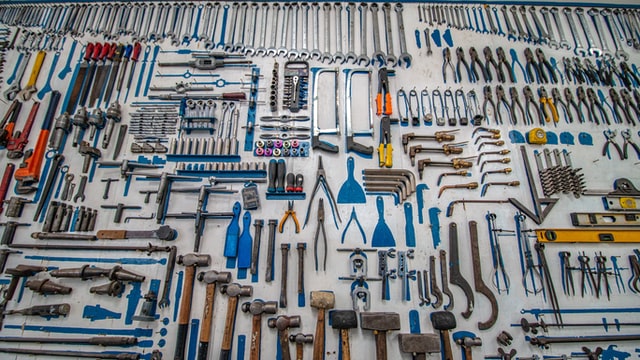There are many different types of toolboxes on the market, and each has its own advantages and disadvantages. Today, we will discuss the six most common types of toolboxes and their uses. Whether you are a professional contractor or a DIY enthusiast, there is a toolbox out there that is perfect for your needs.
Hand-carry
The most basic type of toolbox is the hand-carry toolbox. This box is small and lightweight, making it easy to transport from one job site to another. It typically has a handle on top and a few compartments for storing essential tools. Hand-carry toolboxes are ideal for DIY enthusiasts who need to transport their tools to different locations.
One downside of hand-carry toolboxes is that they are not very sturdy. If you are transporting heavy tools, the box may not be able to hold up. In addition, the compartments are usually quite small, which can make it difficult to store larger tools.
Rolling toolboxes
If you need a toolbox that is both sturdy and spacious, a rolling toolbox may be the best option for you. These boxes have wheels on the bottom, which makes it easy to move them around your workshop or job site. They typically have a large storage compartment and several smaller compartments for holding tools and supplies.
The downside of rolling toolboxes is that they can be quite heavy. If you need to move them up or down stairs during home renovation, it can be a challenge. In addition, they can be expensive compared to other types of toolboxes.
Stationary, drawer-style toolboxes
If you have a large workshop, you may want to consider a stationary, drawer-style toolbox. These boxes are designed to be placed in one location and stay there. They have multiple drawers that can be used for storing tools, supplies, and other small items.
One advantage of these boxes is that they offer a lot of storage space. You can easily organise your tools and keep them within reach when you need them. The downside is that they can be quite heavy and difficult to move around if necessary.
Portable tool chests
For those who need a toolbox that is both spacious and portable, a portable tool chest may be the best option. These chests typically have multiple drawers and compartments for storing tools and supplies. They also have wheels on the bottom, which makes them easy to transport from one location to another.
One downside of portable tool chests is that they can be quite heavy when fully loaded. In addition, they may not be as sturdy as other types of toolboxes.
Stackable toolboxes
If you need a toolbox that is lightweight and easy to store, a stackable toolbox may be the best option for you. These boxes are designed to be stacked on top of each other, which saves space in your workshop or garage. They typically have multiple compartments for storing tools and supplies for those difficult backyard renovations.
A downside of stackable toolboxes is that they may not be as sturdy as other types of toolboxes, as is the case with hand-carry boxes. In addition, the compartments are usually pretty tiny, which can make it difficult to carry around bigger items.
Wall-mounted toolboxes
If you have a small workshop or limited space, a wall-mounted toolbox may be the best option for you. These boxes are designed to be mounted on the wall, freeing up floor space in your workshop. They typically have multiple compartments for storing tools and supplies.
One advantage of wall-mounted toolboxes is that they save space in your workshop. The downside is that they can be difficult to install and they may be a bit more fragile than other kinds. The added issue of having to mount them on the wall also factors in.
Different toolbox materials
Toolboxes are typically made from plastic, metal, or wood.
Plastic toolboxes are the most affordable option and they are typically lightweight and easy to transport. However, they are not as durable as other materials and they may not be able to hold up to heavy use.
Metal toolboxes are more expensive than plastic, but they are also more durable. These boxes can withstand a lot of wear and tear and they will last for many years. However, they can be quite heavy, which makes them difficult to transport. If weight is an issue, consider using aluminium toolboxes. They offer the sturdiness of metal toolboxes while also being relatively lightweight.
Wooden toolboxes are the most expensive option, but they offer a classic look that many people prefer. These boxes are very sturdy and can last for many years if properly cared for.
Toolboxes with a built-in workbench
If you need a toolbox that also doubles as a workbench, there are several options available. These boxes typically have a built-in work surface and multiple compartments for storing tools and supplies.
One advantage of these boxes is that they offer a lot of storage space and the built-in work surface can be handy. The downside is that they can be quite expensive and they may not be as easy to move around as other types of toolboxes.
Conclusion
There’s no shortage of options when it comes to toolboxes. They come in a wide variety of shapes, sizes, and materials. Getting the right type of toolbox is crucial if you want to store and transport tools efficiently. Whichever one you choose, make sure that you get the right size for your workshop needs.





